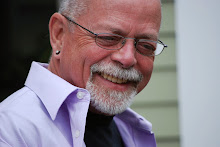Tuesday, April 22, 2014
The man eating chicken, books in various forms, me
The Guardian had a story a month ago about a photograph of a man eating chicken out of a pot on the steps of the New York Public Library. The man eating the chicken told the photographer that he could take his picture if the photographer would “help [him] deliver a message.” Here is the man’s message [from the Guardian story, originally published on Facebook]:
“I work at this library. And before that, I was coming here for twenty years. It’s my favorite place in the world. As many people know, the main reading room of this library is supported by seven floors of books, which contain one of the greatest research collections in the world. Recently, the library administration has decided to rip out this collection, send the books to New Jersey, and use the space for a lending library. As part of the consolidation, they are going to close down the Mid-Manhattan Library Branch as well as the Science, Industry, and Business Library. When everything is finished, one of the greatest research libraries in the world will become a glorified internet cafe. Now read that back to me.”
This photo and message were originally posted to Facebook to a page called “Humans of New York.” It went viral and has been attracting internet attention since it was first posted. Check out the Facebook entry and the Guardian story and follow the links to his picture. Read the comments. There are thousands on the Facebook page.
The comments, like the NYPL administration, reduce the “problem” to a conflict between print books and ebooks. Either we have and read print books in libraries or we move to ebooks and get our books on computers and tablets. And the reason we would move to ebooks is everything else is going digital, so libraries must go digital too. The thousands of people who are writing comments on the Facebook page all see the man in the photo eating chicken as a young, sexy fighter for our literate past as embodied in our great research libraries. The impassioned responses to this post seem driven both by the sexiness of the man in the photo and by the danger our literate culture is in.
I live in a city with at least two research libraries—the Boston Public Library and the libraries at Harvard. I give a little bit of money to the BPL every year, and I expect it and Harvard will continue all of the rest of my life and for generations into the future. I wrote most of my last two novels, Race Point Light and Adam in the Morning, in the Bates Hall, in the BPL (when I wasn’t at Espresso Royale on Gainsborough). We should maintain these research libraries and when possible wire them for access to the internet and for access to the Digital Public Library of America for research and for work. The future belongs to both print books and ebooks. There is room for both and need for both, and our culture needs to take full advantage of both. Only a luddite would think that the coming of the digital age means that our research collections should be sent to New Jersey.
